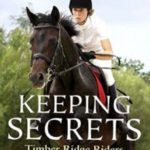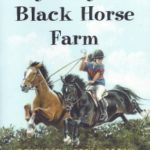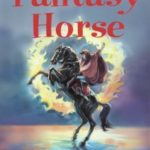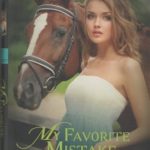Dressage is fun! That is what I am hearing lately from my junior riders, and I am thrilled. I live in Homestead, Florida, where dressage is basically a foreign word, although I am only two and a half hours from Wellington. As a trainer, competitor and mother of two youngsters, I realize dressage promotes a balanced seat, proper contact and harmonious ride with a happy horse. However, selling that to a young jumper rider who wants to tear around a three-foot course with their hair on fire is a hard sell. So, I provide a variety of activities to entice my 5- to 18-year-old students to learn dressage.

As a U.S. Dressage Federation Associate Instructor, I used to gauge my lesson success with the younger riders by how long it took to get the proverbial Can we jump now? This made the hair on my neck rise, almost as much as Are we there yet? Lately, I am hearing Can you help me get the counter canter? How can I get my horse to change behind? and My horse was blowing through my half halts on the trail.? These comments tell me that the kids are starting to get it and having a blast in the process. What’s the trick?
First, I take these young riders seriously because, as a dressage instructor, I have the responsibility to be an ambassador to the future of our sport. These young riders will ensure the future of dressage as they become adult amateurs that will drive the sport.
Then, I think fun and tie dressage to whatever their interests are. As a rule of thumb once a month, I take my students to a jumping or dressage show; have a group jump lesson, aside from their weekly regular lesson; have quadrille practice and a trail ride. I come in the back door with dressage. But boy, when the ribbons start coming in the hunter/ jumper classes, or the horse and rider become one in the cross-country field or trail ride, the smiles become more abundant than the ribbons. So that, my friends, is why we instructors love what we do! Here are some ideas to jazz up your training routine with kids and even adults.
Prix Caprilli
Lendon Gray is a good resource person for the instruction of young riders (Dressage4Kids.com). She sent me Prix Caprilli tests that include five to seven jumps within a dressage test. The spectators and adult competitors love to watch them jump, and the kids love showing off their combined dressage and jumping skills.
There are two tests. The first is comparable to a Training Level test with five jumps no higher than two feet. The jumps can be ground poles for beginner riders. The second Prix Caprilli test is comparable to a First Level test or higher with seven jumps. The maximum height of the fences is 2-foot-6-inches.
The Prix Caprilli is judged based on Pony Club standards. In the working gaits, the horse is not expected to be as round and on the bit as a dressage-only horse. The horse must softly accept the bit and may show more “roundness” in the parts of the tests separate from the jumps. This is perfect for the hunter/jumper kids. In the second Prix Caprilli test, unless otherwise noted, the trot work may be done posting or sitting. When allowed to change leads, the horse may do a flying change or change through the trot. The quality of the change is what matters. So this can become challenging. Some of us struggle with a regular First Level class; imagine adding seven jumps to your test with flying lead changes. The kids love it, and say, Bring it on! The benefits of learning about dressage to improve jumping include:

1. Learning to do correct changes of pace within the gaits, which allow the rider to move the horse up to the jump or back him off.
2. Dressage’s emphasis on relaxation, which helps maintain the tempo on a hot horse that wants to rush to a jump. It also helps riders keep from gripping on an already lazy horse.
3. The correct use of half halts, which helps the horse learn to sit and elevate his shoulders over the jump.
4. Improving balance in the rider’s seat, which allows the rider to go with the horse over the jump.
Dressage encourages an awareness of the horse’s balance and straightness in his body. If a horse is not balanced and straight, it will be difficult for him to have good form and correctly bascule over the jump.
Trail Classes
Some dressage clubs, such as the one in West Palm Beach, offer a trail class in their schooling shows. It is ridden in the dressage arena. This is great for Western riders and those who like to trail ride. In these tests, riders perform correctly ridden dressage geometry while navigating obstacles. They may be required to walk over a bridge, walk through water mailbox and do other fun things.
The benefits of learning dressage for trail classes and trail riding include: building confidence between horse and rider to navigate obstacles, emphasizing correct use of aids to navigate the geometry and the course and understanding that a horse must be straight to properly navigate obstacles.
Riding Cross-Country
In the summer we take a group of kids to Ocala and set up a small beginning level cross Country course. This year we will set up a hunter pace. During cross country camp we start everyday with a warm-up on the flat before moving on to the jumping. The kids must watch their balance uphill and downhill and offer their horses the necessary support to navigate the terrain and maintain proper tempo. You want them to be in control at all times! Then we will work parts of the course each day. On the last day we will send the kids out to ride the entire course in pairs, placing a more seasoned rider with a less experienced rider. They can go over the jumps or around them. The one with the closest time to ideal for the course wins!

The benefits of learning dressage for cross-country riding include: building confidence; becoming better aware of the balance of both horse and rider; emphasizing straightness to, over and after the jump; keeping proper tempo and gait for the terrain and portion of the course.
Vaulting
We have recently begun to play with vaulting. This is new addition to our program seems to be popular and extremely fun. You do not need to know how to ride to vault, but vaulting can greatly improve your riding skills. I have three ex-gymnasts who are learning dressage, and we have a wonderful pony called Oaky Dokey who is exactly that–OK with everything.
Vaulting is a great way to teach kids groundwork, proper longeing techniques and use of longe equipment. This is an area that I find deficient in most young riders. Maybe the greatest benefit of vaulting is the way it improves the confidence level of riders. In the words of a timid 8-year-old, “If you can canter bareback without reins and stand up on your pony’s back at the walk, riding with a saddle, stirrups and reins is easy-peasy, lemon squeezy.”
Contact the American Vaulting Association (americanvaulting.org) to get started. You can form a local club, stay informed of competitions and clinics and apply for grant money to bring in a vaulting clinician.
Quadrille
Finally, my own personal favorite way to teach kids about dressage is through a quadrille. When you put a group of kids with their ponies in a ring, play their favorite music (which helps them keep the right tempo), something magical happens. Kids and horses are social beings, and they like doing fun things with their friends. So quadrille riding is interesting to them. I equate this to how a school of fish moves in synchronization and harmony when they rapidly change directions. But, don’t kid yourself; this is controlled chaos at its best, if not performed perfectly. As an instructor and chef d’equipe it can be overwhelming. The key is to keep it simple at first and build up to more advanced movements. Work on correct geometry, and trust the schooling figures to school the horses. As the riders work to maintain the proper spacing, alignment and tempo, the horses come onto the aids and it all starts to fall in place.
The U.S. Dressage Federation makes up quadrille tests–Basic through Third Level and Freestyle (usdf.org)–that are really written for four riders. You can show a quadrille as an exhibition with more than four riders, however, I warn you that it is very difficult to get all the test movements in with more than four riders. I like practicing basic movements with six to eight riders because it makes them ride more accurately. But I like to show with only four riders. The riders who are sitting out can call out the movements and blow the whistle, which is necessary when movements are performed simultaneously as a group. Dancing together like this offers a big challenge that kids want to take on. The benefits of quadrille riding include:
1. Learning to maintain a steady tempo.
2. Learning to ride correct schooling figures.
3. Learning to get the horse in front of your leg.
4. Better understanding the half halt to properly remain in formation.
5. Developing camaraderie and lifting everyone’s spirits to another level; dressage becomes a social sport for horse and rider.
Quadrille riding is contagious. I was recently approached by a trainer at a local hunter/jumper barn because they saw our quadrille and their kids want to start one, too. Now I have my quadrille members assisting that trainer in coaching their team-talk about leadership experience and confidence and self-esteem building. These are intrinsic benefits at an age that can be a difficult time for the average teenager. I also have three riders that have mild learning disabilities, such as ADD, dyslexia and spatial disorders. Quadrille and riding, in general, serves as therapy for these disabilities and helps them cope.
What we instill in this younger generation ensures the future of dressage. If it’s fun, kids stick with it. Think outside the box (the dressage arena) when it comes to kids and you will find, just as I have, that you can become young at heart once again!








